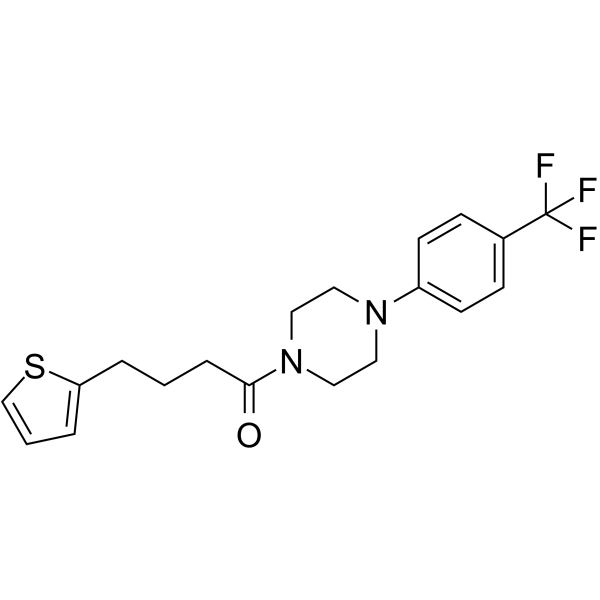| Description |
NADH-IN-1 has NADH:ubiquinone oxidoreductase inhibitory activity with an IC50 value of 27 μM. NADH-IN-1 can effectively stimulate glucose uptake in vitro. NADH-IN-1 is readily metabolised by the liver. NADH-IN-1 can be used for researching diabetes[1].
|
| Related Catalog |
|
| Target |
IC50: 27 μM (NADH:ubiquinone oxidoreductase)[1]
|
| In Vivo |
NADH-IN-1 (1 μM) exhibits a short half-life and fast intrinsic clearance indicating that it is readily metabolised by the liver in vivo; shows no adverse effects on primary rat hepatocytes, and does not inhibit the hERG channel[1]. NADH-IN-1 (10 mg/kg; IV or PO; single dosage) produces no observable toxic effects at 10 mg/kg by IV or PO; exhibits a short half-life and high plasma clearance; exhibits high mouse and human serum protein binding, as well as moderate bioavailability[1]. Animal Model: Male C57BL/6 mice[1] Dosage: 10 mg/kg Administration: IV or PO; single dosage (Pharmacokinetics Analysis) Result: Produced no observable toxic effects at 10 mg/kg by IV or PO; exhibited a short half-life of 0.45 h and high plasma clearance; exhibited high mouse and human serum protein binding, as well as moderate bioavailability (21.4%).
|
| References |
[1]. Devine R, et al. Design, synthesis, and biological evaluation of aryl piperazines with potential as antidiabetic agents via the stimulation of glucose uptake and inhibition of NADH:ubiquinone oxidoreductase. Eur J Med Chem. 2020;202:112416.
|
